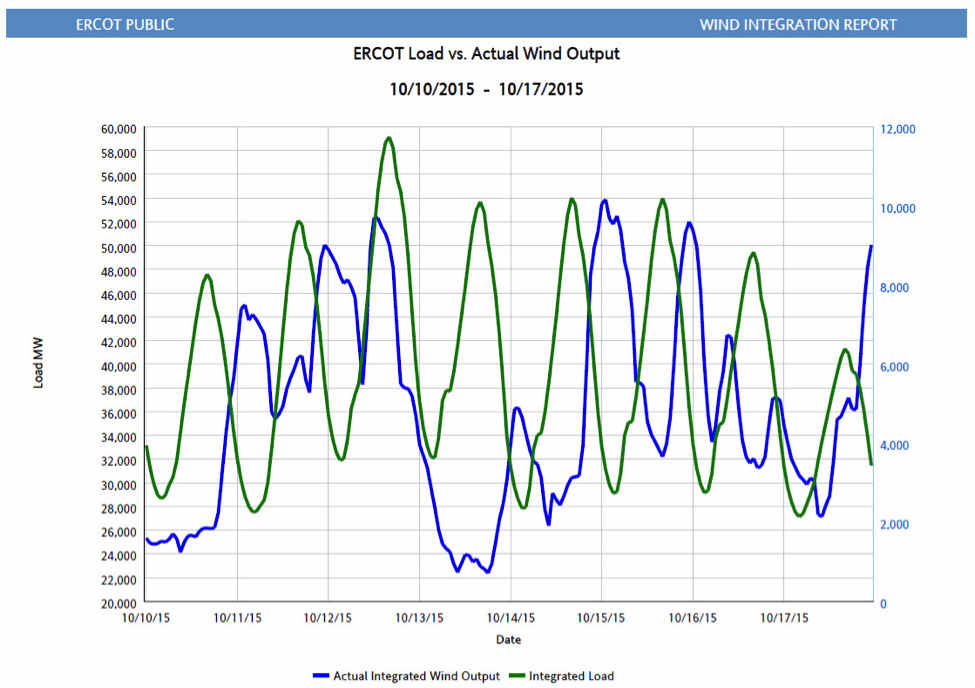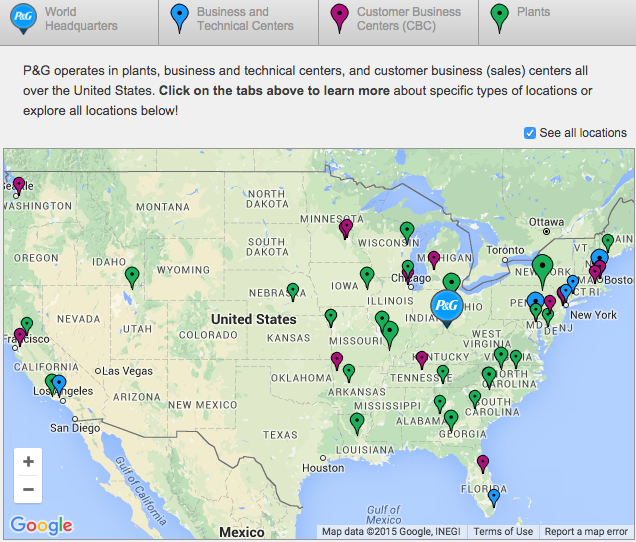Earlier this week Procter & Gamble made the startling claim that it would “meet its electricity demands by using 100 percent wind power.” This claim is false for two important reasons. First, the wind does not blow all the time and cannot be counted on to power Procter & Gamble’s plants. Second, Procter & Gamble is buying electricity from a wind facility in Texas that is on a completely different interconnection than Procter & Gamble’s plants. This means that the electricity almost certainly will not reach Procter & Gamble’s plants.
Why are we fact-checking Procter & Gamble? Because this wind facility will likely impose millions of dollars per year in hidden costs on both taxpayers and electricity ratepayers. It is unfair for Procter & Gamble to take advantage of U.S. taxpayers and electricity ratepayers to wage a public relations campaign.
Procter & Gamble Will Not Meet Its Electricity Demand with Wind, Because Wind Cannot Keep the Lights On and Factories Running
In a Press Release Monday, Procter & Gamble stated:
Procter & Gamble (P&G) announced today plans to meet its electricity demands by using 100 percent wind power to make iconic Fabric & Home Care brands, such as Tide and Dawn. This is possible thanks to a new partnership with EDF Renewable Energy (EDF RE) which will see a new Texas based wind farm generate 370,000 MWh of electricity each year.
The problem is that wind alone cannot “meet [Procter & Gamble’s] electricity demands,” and hence it is incredibly dishonest to say that it can. The reason is that the wind does not blow all the time. It especially does not necessarily blow during working hours when Procter & Gamble’s plants are running. For example, since the wind facility will be in Texas, here’s a chart from the Texas electricity grid operator showing the actual electricity demand in green versus the actual wind output in blue. Note the mismatch between electricity demand and wind generation:
If Procter & Gamble wants to have reliable electricity at its plants, it will not (and does not) run its plants on wind-generated electricity. Instead, its plants are connected to the grid and receive electricity from some wind (about 4 percent nation-wide in 2014), but almost exclusively from coal, natural gas, nuclear, and hydro power (39, 27, 19, and 6 percent nation-wide in 2014 respectively for a combined 91 percent of the electricity supply).
Procter & Gamble understands that its plants need reliable, affordable electricity. That’s why its Mehoopany Plant in Pennsylvania runs off-grid exclusively on natural gas turbines. If Procter & Gamble truly wanted to use 100 percent wind power for its plants, why hasn’t it gone off-grid with exclusively wind turbines? Perhaps it’s because factories don’t run a random 34 percent of the time and Procter & Gamble would never tolerate such a hectic and unreliable schedule. Still, the headline for this week’s New York Times article on the matter reads “Procter & Gamble to Run Its Factories With Wind Power.”
Procter & Gamble Almost Certainly Will Not Receive Electricity From This Wind Facility
Even if wind power were capable of keeping the lights on in Procter & Gamble’s plants, the wind facility in question is not anywhere near Procter and Gamble’s plants and is located within a different transmission interconnection. Procter & Gamble is partnering with the Paris, France-based EDF Renewable Energy and will buy electricity from EDF’s new wind facility built in Cooke County, Texas. The Texas wind farm is hundreds of miles away from (and in a different interconnection from) Procter & Gamble’s plants. As you can see, Procter and Gamble does not have a single facility in Texas, yet electricity generated within Texas almost always stays in Texas (the state interconnection is an electricity “island.”) What this means is that, on top of the “100 percent renewable” myth for on-grid power, Procter & Gamble added a new layer of myth by spanning multiple states and separate grids.
Here is a map of Procter and Gamble’s plants:
It appears that Procter & Gamble manufactures its Fabric & Home Care brands at plants in Alexandria, Louisiana; Kansas City; St. Louis; Lima, Ohio; and Brockville, Ontario (and maybe at other plants as well). The Kansas City plant is 500 miles away from Cooke County, Texas, while the Brockville, Ontario Plant is 1,600 miles away.
To say that a Texas wind facility will “meet [the] electricity demands” of Procter & Gamble’s distant plants is just not true and leaves the impression that wind-generated electricity is capable of powering a modern economy. It is not, and Procter & Gamble should be held accountable for spreading misinformation in its public relations campaign.
Worse, the Texas wind facility is located in the Texas Interconnection while Procter & Gamble’s U.S. plants are in the Eastern Interconnection and the Brockville plant is in the Quebec Interconnection. These electricity interconnections are connected, but only loosely. There is just no way for the electricity from Texas to flow directly and reliably to Procter and Gamble’s plants.
Procter & Gamble’s Wind PR Imposes Costs on American Families
Wind power increases costs for everyday Americans in two important ways. First, wind production in the U.S. is supported by federal programs that cost American taxpayers billions of dollars each year. A recent IER analysis estimated the one-year cost of federal wind subsidies to be nearly $3 billion in 2012. For each megawatt-hour of wind energy produced, taxpayers give $23 to wind producers through the federal wind production tax credit. Subsidies to the wind energy industry have only grown since then as more wind facilities have come online.
Second, the intermittency of wind power imposes costs on the reliable power plants on the grid. Because wind is unreliable, particularly in times of high demand, reliable plants have to stay online to produce power when it is needed most. But with more and more off-and-on production from wind facilities, those reliable plants run less and less, which significantly raises the “levelized cost” of those plants. Earlier this year, we calculated those costs to be between $15 and $30 per megawatt-hour. Hence, the hidden costs of wind power—tax subsidies and imposed costs combined—are as high as the average wholesale price of electricity in 2014.
Procter & Gamble is purchasing 370,000 megawatt-hours of electricity per year from the wind facility owned by EDF Renewable Energy. For that amount of production, taxpayers’ tab via subsidy payments will be $8.5 million per year through the wind Production Tax Credit. Ratepayers will also shoulder higher electricity bills due to wind’s unreliability imposing an additional $5.5 million to $11.1 million in costs per year to the grid. In short, wind is a raw deal for American taxpayers and electricity consumers. Procter & Gamble should not brag about saddling American families with nearly $20 million in hidden costs every year.
Conclusion
Procter & Gamble’s announcement that it will “meet its electricity demands by using 100 percent wind power” would be remarkable if it were true. In reality, it is a deceptive public relations campaign that will impose real costs on American families. Procter & Gamble—and other companies making similar claims—should be more honest about how electricity works and stop lying to the public about the viability of wind power.





